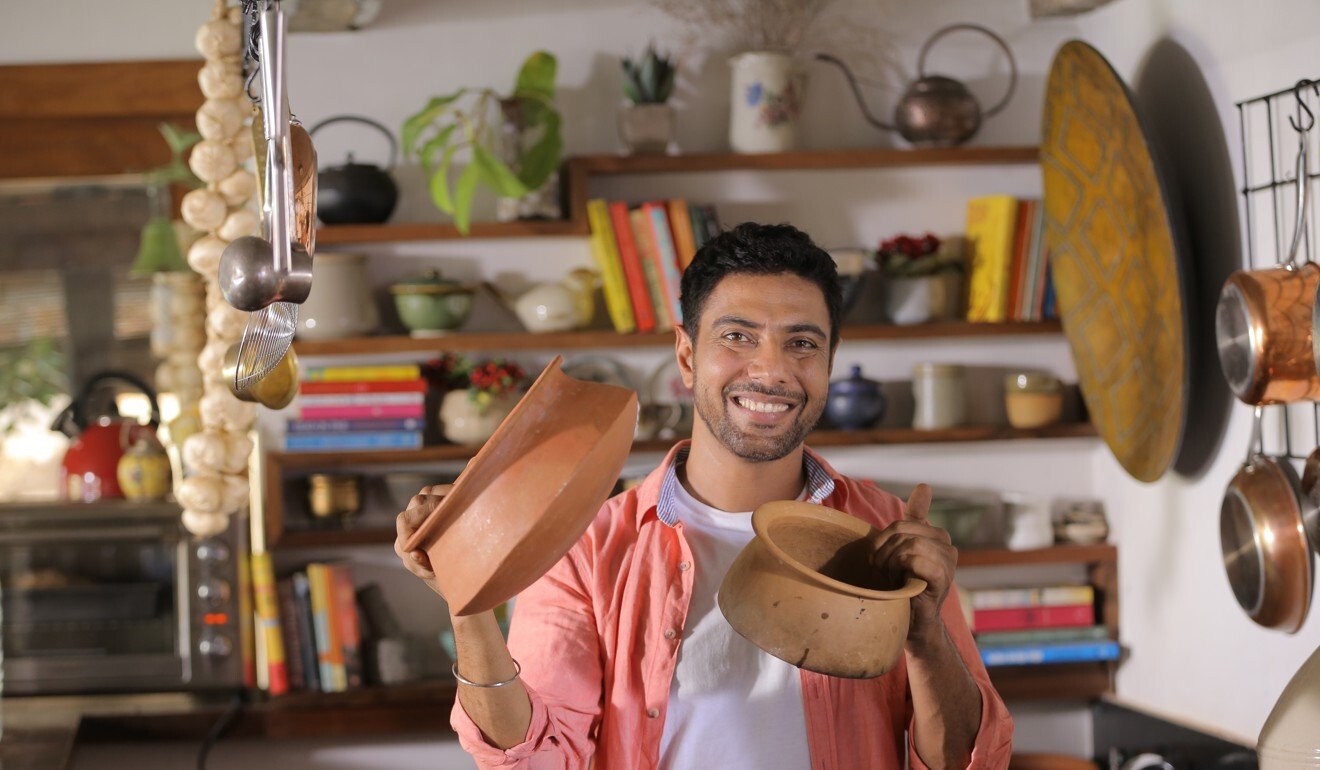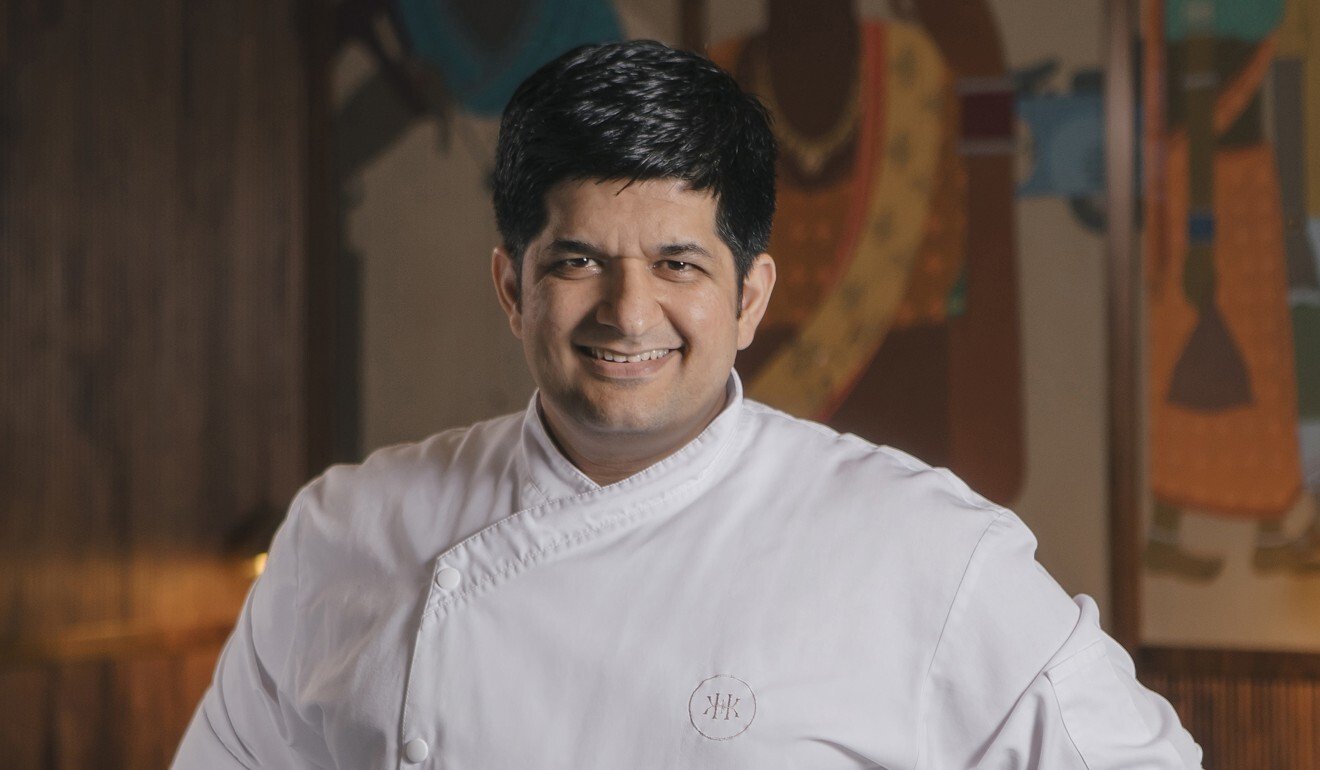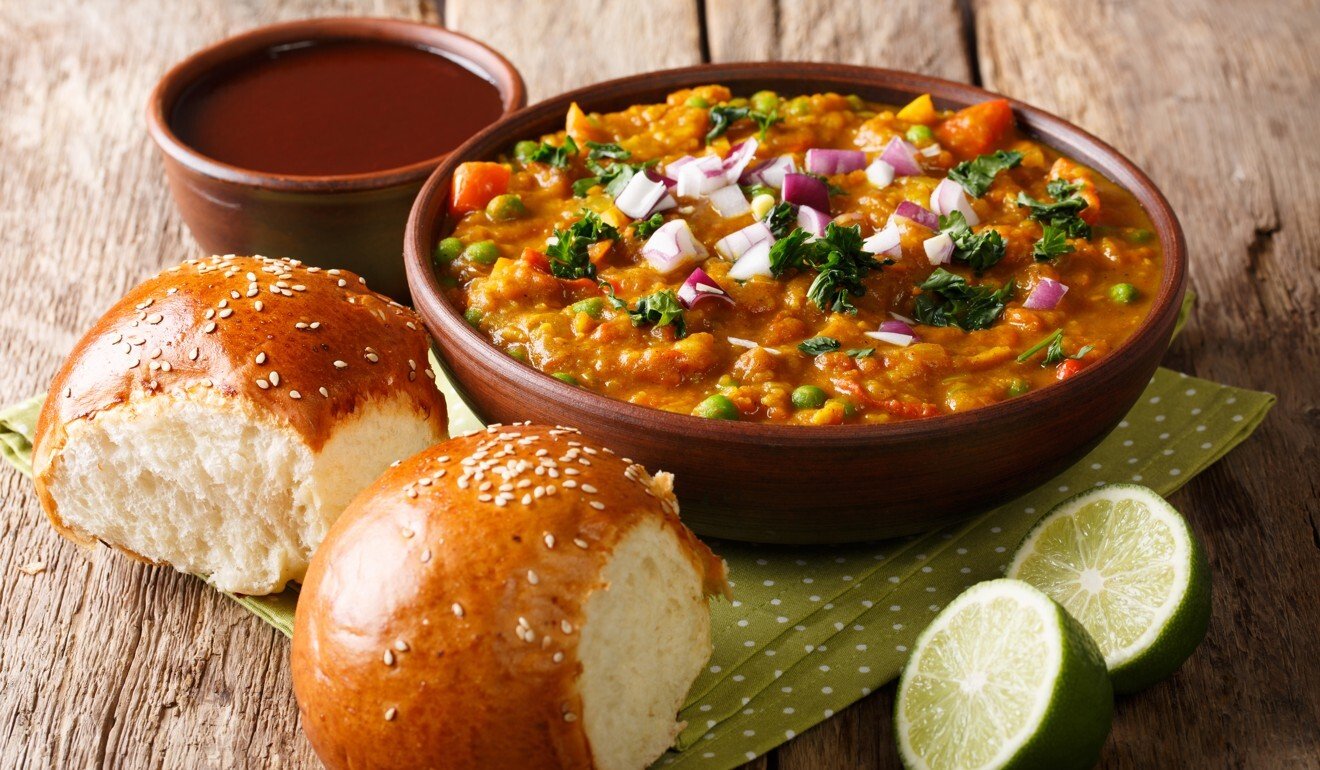
How Indian are country’s favourite street food snacks? Samosas may have come from Arabia, the pav in pav bhaji is Portuguese, but puri is pure Indian
- Indian street food, known as chaat, can be found all over the country and is enjoyed by all sectors of society
- We look at the history and regional varieties of three favourites: samosas, puri and pav bhaji

It could be a scene from a street corner almost anywhere in India. People throng around a cart laden with a basket full of small, fried hollow flour balls called pooris, a large earthen pot insulated with layers of red cloth and filled with cold, spiced water called paani, and an assortment of steel bowls brimming with spiced boiled potatoes, boiled chickpeas, yogurt, mint and tamarind chutneys.
The street vendor, or chaat wallah, is busy. Picking up a puri with one hand, he quickly taps a hole in the top of the hollow ball with his thumb, then fills the puri with potato and chickpea mash. Dipping the puri into the earthen pot, he fills it with paani and gives it to a customer who eagerly puts the entire ball into her mouth.
The crispy puri breaks and a myriad flavours explode on the palate. Cold and hot, spicy, tangy and sweet, all at the same time. This is one of the stars of Indian street food – the paani puri.
Indian street food, called chaat in northern India, from a Hindi word that means “licking”, literally leaves patrons licking their fingers.
An all-encompassing term for a sweet and savoury range of dishes, chaat includes fried or boiled potatoes, fried flour balls, puffed rice, and mashed chickpeas, all of which are served with chopped onions, tomatoes, yogurt, mint, tamarind and various other chutneys and spices.
Chaat stands can be found alongside the bustling streets of urban India, on railway platforms, in school and college canteens. Recently, for those more concerned with hygiene, chaat has been offered in quick-service chain stores as well as in fine-dining restaurants. It is what Indians eat at any time, for meals or between meals.

“Indian street food is affordable, easily available and tasty,” says Mayur Sharma, 48, who co-hosted a popular television food show, Highway On My Plate. “For the working classes who are too busy or cannot afford to eat at restaurants, street food is the primary source of sustenance. For others it is an appetising snack.”
Sharma and his friend and co-host, Rocky Singh, 50, travelled over 400,000 kilometres (250,000 miles), sampling street food all over India for the show.
“A chaat stall is a great social leveller. You could find a daily labourer and a businessman queuing up together to devour the delicacies,” Sharma says.

Some say chaat was born in Delhi in the 16th century in the royal kitchen of the Mughal emperor Shah Jahan (who had the Taj Mahal built). Water from the Yamuna river, which flows through Delhi, was thought to be unsafe for drinking because of waterborne diseases. The royal doctor suggested adding liberal doses of spices such as red chillies, tamarind and coriander to the local diet to kill bacteria, giving birth to tangy chaat dishes.
“’Til today, the chaat of old Delhi, where Shah Jahan lived, is the tastiest chaat in the country,” says Ranveer Brar, 42, an Indian celebrity chef and TV food show judge who believes chaat originated earlier, in the ancient city of Benares.
According to well-travelled television host Singh, the paani puri has delicious regional differences. “As paani puri travelled the country, each region developed its own version of the dish according to the local tastes and bestowed it with their own names,” he explains.
“The paani puri in Mumbai uses hot ragda, a mash made of white peas, as the filling. The Delhi gol gappas are known for their spicy potato and chickpea mix and tangy water. Puckhas in Kolkata use a stuffing made of black chickpeas and potatoes.”

Manish Mehrotra, 46, one of India’s most awarded chefs and the man behind Indian Accent, India’s top ranked restaurant for many years with branches in New Delhi and New York, says chaat has global appeal.
“One of the most popular dishes in our New York restaurant is the paani puri, which we serve with five different kinds of paani – mint, tamarind, roasted pineapple, pomegranate and yogurt with smoked garlic,” he adds.
“For a chef, chaat is the perfect dish to experiment with. There are numerous flavours, textures and colours to play with. One can also get creative with garnishes as well as the type of fruit you can add to a particular dish.
“One of my favourites on our menu is tamatar ki chaat, chaat made from tomatoes, which originated in Benares. The aloo tikki chaat, called potato sphere on the menu – fried potato patties served with white pea mash, yogurt and watermelon – is a big hit as well.”
Manav Tuli, 38, the chef at Chaat, a newly opened Indian restaurant at the five-star Rosewood Hong Kong hotel, enjoys the flavours of Indian street food. The menu at Chaat features bhel puri, (a chaat dish traditionally made with puffed rice, onions and tangy tamarind sauce) with scallops.

Pav bhaji, a mouth-watering buttery vegetable hash served with lightly toasted soft buns, or pav, is the rock star of Mumbai street food, and has historic origins dating back to the 1860s.
“The cotton mills in Mumbai attracted huge orders and mill owners had factory workers working round the clock. The challenge of feeding the workers with a quick, nutritious and affordable meal gave birth to the now famous pav bhaji,” says Sharma.
“Pav bhaji is a clever and practical dish. It is fresh, healthy and cheap. The roadside vendors used local and leftover vegetables from the day, mashed up with lots of spices and butter. The pav, or rectangular pull-apart soft bread roll, was a gift from the Portuguese who landed in India in the 1500s.”

Tuli says the pav bhaji must have certain characteristics. “The bread has to be soft, buttery and light, with perfect holes to soak up the smashed vegetables it is served with,” he explains.
“The bhaji should be buttery, spicy, and yet so flavourful and wholesome that you just can’t stop eating it,” he adds.
The immensely popular samosa – a fried triangular pastry filled with a mixture of boiled potatoes, onions, peas, green chillies, ginger and spices – is an example of a successful Indian street cuisine import. Served with tamarind and coriander chutney, it is considered the perfect companion to a hot cup of tea in many parts of India.

The samosa is believed to have been brought to India by Central Asian traders who cooked it on campfires and packed it in their saddlebags as a snack for their journey. Recipes for samosa are found in Arab cookbooks dating from the 10th to 13th centuries under the names sanbosag and sanbusak.
The famous medieval Moroccan traveller Ibn Battuta describes a wafer-thin pastry packed with mince and peas served at the court of Mohammad Bin Tuglaq, the 14th century sultan of Delhi.
Abul Fazl, 16th century grand vizier and author of Ain-i-Akbari, an account of the court and administration of the great Mughal emperor Akbar, describes the samosa as a dish relished by the emperor himself.
Down the centuries, the samosa was tailored to local tastes, with the addition of pepper, caraway seeds and ginger. Potatoes, introduced to India by Portuguese traders in the 16th century, replaced the meat filling, which probably resulted in largely vegetarian Indians adopting the samosa as their own.
“Samosas, too, vary from region to region,” says Singh, who has tasted a variety on his travels. “The samosas in Delhi are larger with a spicy filling of potatoes, peas, green chillies and dried fruit. In Kolkata, samosas are smaller and the filling is made of boiled and diced potatoes. Samosa personifies the essence of India – adaptable and inventive.”